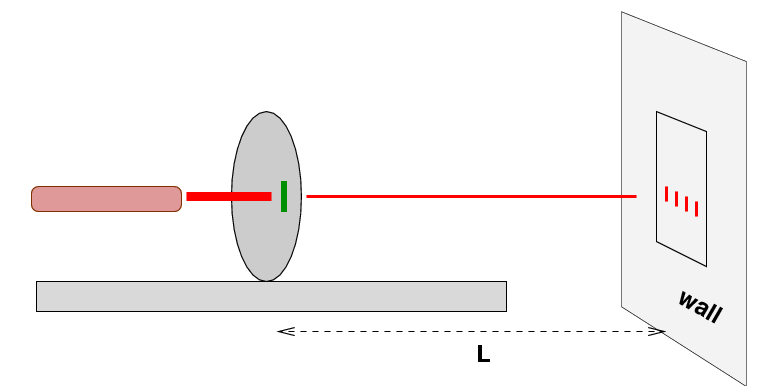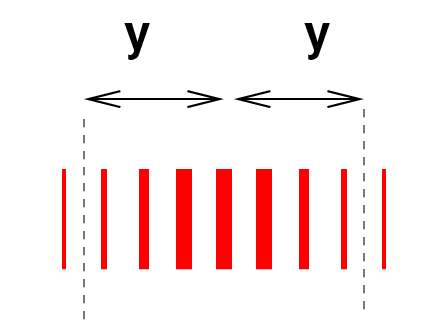

Your job is to use a diffraction pattern to determine the wavelength of light emitted by a laser. If you have time, you can then measure properties of human hair.
Set up an optics bench, laser, and Single Slits wheel as shown. Place a piece of paper on the wall, so that the distance L is about 1.5 meters.

In the example above, Joe is measuring the distance between the m = 4 DARK spot to either side of the center.
( L * m )
y = lambda * ( -------- )
( a )
and choose quantities for your axes
so that the slope of the line on the graph
is the wavelength lambda. How does this measurement of wavelength compare to the measurement you made using two slits? Do they agree within the uncertainties?
If you have time ...
Pick one member of your group. Pluck three hairs from its head, and use diffraction (plus the wavelength you've determined already) to calculate the width of each one. Compute the average and standard deviation of these widths.
Write your results on the board at the front of the class. Indicate whether the hair is light or dark in color.